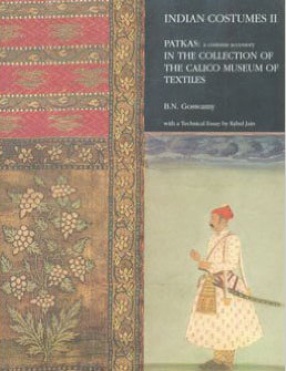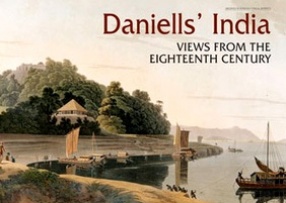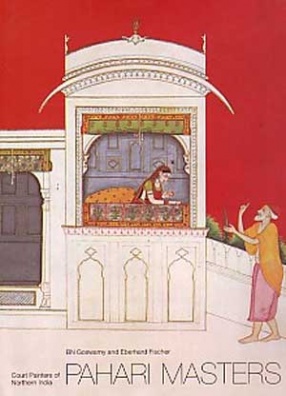
B.N. Goswamy

Showing all 20 books













The world of art is complex and challenging in general; in India it is even more so because the documentation here is truly thin, and whatever exists is so widely scattered that it becomes a task in itself to locate it.
This book address both these issues and brings together in one volume a remarkable body of material consisting not of speculations or theories but of original, primary sources. The voices one 'hears' in these excerpts are true and authentic, and ...

This work centers upon Manaku of Guler older brother of the greatly celebrated Nainsukh reconstructing whatever little is known of his life, but following closely his artistic journey. Manaku came from an obscure little town in the hills of northern India home to his singularly talented family – and yet his vision knew almost no limits. Endowed with soaring imagination and great painterly skills, this man with a name that literally means a ...

Please note that orders which exceed the quantity limit will be auto-canceled. This is applicable across sellers.

Three things come magically together in this remarkable series of paintings: a great text, a delectable old romance, and the work of one of the most talented families of painters known to Indian art. The text is the 12th century Naishadhacharita of Sriharsha, one of the last great kavyas of Sanskrit literature. The story, told with the utmost delicacy, centers around the intense love that grew – mutual sights heard of, but yet unseen – between King ...

Through close encounters with a hundred carefully handpicked works, spanning nearly a thousand years, and ranging from Jain manuscripts and Pahari and Mughal miniatures to Company School paintings, B.N. Goswamy unlocks the many treasures that lie within them. As he narrates the stories behind each work, and deciphers the visual vocabulary and language of the painters, he also brings to life the cultural, social and political milieu in which they were created. An ...

The kaavad of Rajasthan is a portable shrine with multiple doors that fold into themselves. The Kaavadiya Bhat or the storyteller journeys with this brightly painted wooden box to the homes of his patrons, to recite their genealogies and regale them with the stories of the pantheon of deities painted on the shrine. While the object serves as an aide – memoire for the storyteller, the keeper of its secrets his tales are meant to reaffirm the lineage of his ...

Contents: Essay—Wondrous Images
Catalogue of Pichhvais
Reserve Collection/Visual Supplement
Appendices
Select Bibliography

Thomas Daniell was thirty-six years old when he and his nephew William, barely sixteen, sailed out from Gravesend in April 1785, headed for the East. They arrived in Calcutta via China the next year.
The Daniells traveled across India, painting oriental scenery wherever they went. Their views were widely appreciated and are representative of that fascinating period. The Daniells returned to England in September 1794. This special book presents a selection of ...

Covering the period of over 150 years from 1695 to 1859, this rich collection of 52 Persian documents is published with facsimiles, transcription, translation and full annotation of each document. Together, these diverse documents provide information on matters: political, social, economic and cultural, with a bearing of political history, polity, administrative practices, local functionaries, legal practices at the court of the Qazi in relation to property, role ...

“To trace the life and career of a painter (of the past) in India is”, as the author says, “somewhat akin to following the course of an earthen lamp on swift waters.” The glow is bright and warm, and one can keep it within sight for a while, but things can quickly turn and uncharted vastness takes over.However, knowing this and going against the prevailing (perhaps even comfortable) state of anonymity that is almost a defining condition of ...


The paintings to which this volume serves as a catalogue belonged once to one or the other member of the Sarabhai family. But, compared to so many other distinguished collections which the family owned, and later gifted either to the Calico Museum of Textiles or the Sarabhai Foundation—of textiles, pichhwais, manuscripts, Jain artifacts, and south Indian bronzes, among them—they have remained little known till now.There is no dominant theme that ...


This volume offers essays by some of the most eminent art historians of India. The subjects range from Gandhara to Kerala, classical to folk arts and ancient times to the place of traditional arts in the world of today. Each essay is an authorative work by an expert in the field. Although they cover a wide range, the contributions share an interest in the artist, and the social and philosophical context of his work. The proceedings of the seminar, distinguished ...

The Word is Sacred; Sacred is The Word: The Indian Manuscript Tradition sets out to demonstrate the wealth and diversity of India’s manuscript traditions and to communicate a lasting impression of India as a multifarious and multicultural society that holds knowledge and knowledge systems in high regard. Some one hundred precious manuscripts, books, and related documents introduced in this book span a timescale of almost two millennia of Indian cultural ...

This is not a general survey of the Art of the Sikhs, but a serious, meaningful inquiry into some of the most significant aspects of the subject. Explored in it, through a wide range of works of art and other artifacts - paintings and drawings, textiles, arms, jewellery, coins, among them - are ideas that run, like a golden thread, through Sikh are and thought, Starting with Guru Nanak's Encounters, as outlined in the Janamsakhis - traditional accounts of ...

No one is a Hindu; no one a Muslim. With these radical words Guru Nanak (1469-1539) founded the Sikh religion, calling for the recognition of one God, by whatever name devotees chose to call him, and the rejection of superstition, avarice, meaningless ritual, and social oppression. In his embrace of all religions, Guru Nanak envisioned a loving God that was outside the bounds of any one religion. He upheld the truth of equality among all beings and practiced the ...


This work forms one of most valuable contributions made till date to the area of Punjab studies. For Painters at the Sikh Court is more than simply a work about painting and patronage: the material presented in it enhances and deepens our very understanding of how things worked at the Sikh courts, both at the royal and the sub-royal levels. The twenty documents that constitute the body of this study – a chance find – come from one single family of painters in ...

The Word is Sacred, Sacred is the Word: The Indian Manuscript Tradition demonstrates the wealth and diversity of India's manuscript tradition and communicates a lasting impression of India as a multifarious and multicultural society that holds knowledge and knowledge systems in high regard. Some one hundred precious manuscripts, books, and related documents introduced in this book span a timescale of almost two millennia of Indian cultural history. This book is ...
